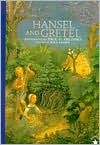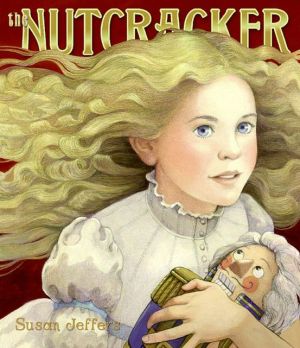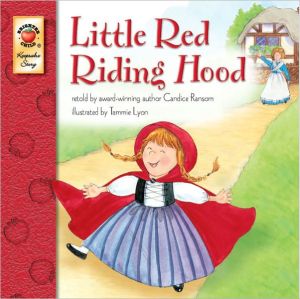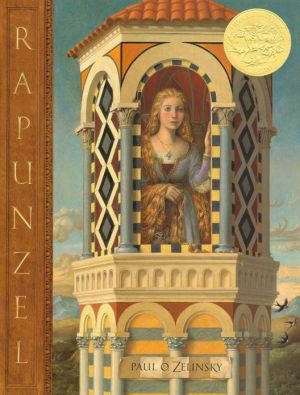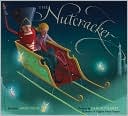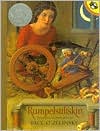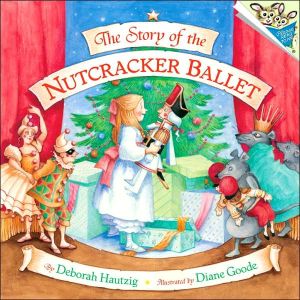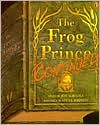Hansel and Gretel
"Artfully understated retelleing and magnificent apintings result in an unsurpassable presentation of the ancient fairytale. This is a triumph of children's literature, for all ages." --Publisher's Weekly A Caldecott Medal Honor Book\ \ When they are left in the woods by their parents, two children find their way home despite an encounter with a wicked witch.\
Search in google:
"Once upon a time there was a poor woodcutter who lived near a great forest with his wife and his two children. The little boy was called Hansel, and the little girl's name was Gretel. So begins this classic Grimm tale of two innocent children, abandoned in the forest by their cruel mother, who happen upon the enchanting gingerbread house of a wicked witch. Hansel's cunning and little Gretel's courage foil the witch's evil plan to fatten them up and eat them, and in the best fairy tale tradition, they and their loving father live happily ever after. Dorothee Duntze's elegant, stylized illustrations provide an intriguing new interpretation of this childhood favorite, a satisfying story of evil punished and goodness rewarded.Publishers WeeklyOriginally published in Britain, this is a moody, intense version of the fairy tale that Browne has infused with modern references, heightening the uncanny aspects of an already frightening story. Famine has struck, and the father is persuaded by a frowsy stepmother to ditch their children in the woods. She dies by the time Hansel and Gretel find their way out, after killing the witch. Browne presents jarring, poignant touches through his surrealist eyetrees claw their way to the sky, Gretel's knees are grimly unwashed, the oily-looking wallpaper in their home is cracked and peeling. If the family's poverty of other versions has an aura of romance, this book shows a grinding, terrible hungerfirst for food and then for happiness. It is an unforgettable, moving vision. Ages 3-8. (April)
\ Publishers Weekly\ - Publisher's Weekly\ Originally published in Britain, this is a moody, intense version of the fairy tale that Browne has infused with modern references, heightening the uncanny aspects of an already frightening story. Famine has struck, and the father is persuaded by a frowsy stepmother to ditch their children in the woods. She dies by the time Hansel and Gretel find their way out, after killing the witch. Browne presents jarring, poignant touches through his surrealist eyetrees claw their way to the sky, Gretel's knees are grimly unwashed, the oily-looking wallpaper in their home is cracked and peeling. If the family's poverty of other versions has an aura of romance, this book shows a grinding, terrible hungerfirst for food and then for happiness. It is an unforgettable, moving vision. Ages 3-8. (April)\ \ \ \ \ Children's LiteratureIt's only a story...it's only make believe...This re-telling of the classic Grimm tale is not for the very young, and in this day and age of child abuse, neglect and terrorism could be considered just plain frightening. Readers need to carefully explain to their listeners that good ALWAYS triumphs over evil, even if it is uncomfortable, painful and a long process. A woodcutter and his wife are bemoaning their plight of hunger¾there is not enough money to feed a family of four. The woodcutter's wife venomously plans to lose their children in the woods—hopefully to be free of them for good. Reluctantly, the woodcutter agrees, unaware that their children have heard the whole conversation. Hansel and Gretel obligingly follow their parents into the woods. Hansel cleverly drops white pebbles that glisten in the moonlight, ensuring a path home for two lonely, frightened children. Again, their mother insists "We must get rid of the children!" and again, their father gives in. Again, all four obedient children set out for the forest. This time, Hansel drops breadcrumbs to find their way home, but all are eaten by the birds. Now the children are alone. A white bird leads them to a house in the forest made of gingerbread, cakes and clear sugar. Immediately the children begin to eat. Noticing someone nibbling on her home, an old woman invites the children inside, assuring them no harm. However, the next day, she erupts as the evil witch, making plans to eat Hansel and Gretel. Still, the brother and sister keep their wits and manage to outsmart their captor. As the oven is being prepared for baking, Gretel feigns ignorance and asks the witch how to know if it is ready. As the witchdemonstrates, she is pushed into the oven and the door is bolted. Now Hansel and Gretel can once again find their way out of the forest. They return to their father's house, bringing treasure from the gingerbread house. As their mother has died (coincidence?), the children are now safe and sound. While this tale has a happy ending for some, getting there could be quite traumatic for some readers. Well-placed comfort words and Hansel's admonition of "God will not forsake us" are necessary if this story is being read aloud, especially to younger children. The illustrations, though exaggerated at times, help convey the disparity of the family as well as the sense of wilderness in the forest and the tenderness of the children coming home. A nice/unique addition to a fairy tale collection, but certainly not unequaled. 2001, North-South Books, $15.95 and $15.88. Ages 4 to 8. Reviewer: Elizabeth Young AGES: 4 5 6 7 8\ \ \ School Library JournalGr 1-4-A brooding, surrealistic version of the classic fairy tale. Wallace modernizes the Grimms' story, turning the stepmother into the more ambiguous "the woman"; making Gretel into Hansel's equal partner (eliminating her crying); and omitting all mention of God. Otherwise, the text follows the original pretty faithfully. The illustrations, done in pastel pencils on black paper, have an eerie gloominess and iridescent quality. The witch's face is only shown on the cover, but the pictures inside are scary enough. When the children are alone in the forest, they are tiny figures in an alien, threatening landscape. What looks like a giant, half-submerged face seems to threaten them at one point; a huge hourglass next to Hansel's cage underlines the urgency of his danger; and the siblings' reunion with their father takes place near a graveyard. At the end, the text proclaims the traditional litany of "...they lived in perfect happiness from then on," but a turn of the page reveals an ominous rebirth of the witch. Somewhat surprisingly, there are not many good picture-book versions of this tale in print. James Marshall's (Dial, 1990) is excellent for the very young-the witch is not scary and a sense of humor pervades the text; Susan Jeffers's (Dial, 1980) is traditional and beautiful. Wallace's is unusual and emphasizes the dark side of the tale. It is definitely a distinguished book to savor; independent readers will pore over its pages and scrutinize its details.-Judith Constantinides, East Baton Rouge Parish Main Library, LA\ \ \ \ \ School Library JournalK-Gr 3-This version of the familiar tale of two clever children who overcome their fears and triumph over evil, while clear and readable, tends toward the lurid. For example, when Gretel pushes the witch into the oven, the text reads: "The old witch burned to death, screaming and howling miserably." Duntze's startlingly imaginative illustrations range from impressionistic to surreal, and vary in size and coloration to match the changing moods of the narrative. The cleverly wrought bread-strewn endpapers set the tone for this stylized picture book. While a few of the images are potentially frightening, most will agree that the illustrations are accomplished and very special, indeed.-Barbara Buckley, Rockville Centre Public Library, NY Copyright 2001 Cahners Business Information.\ \
